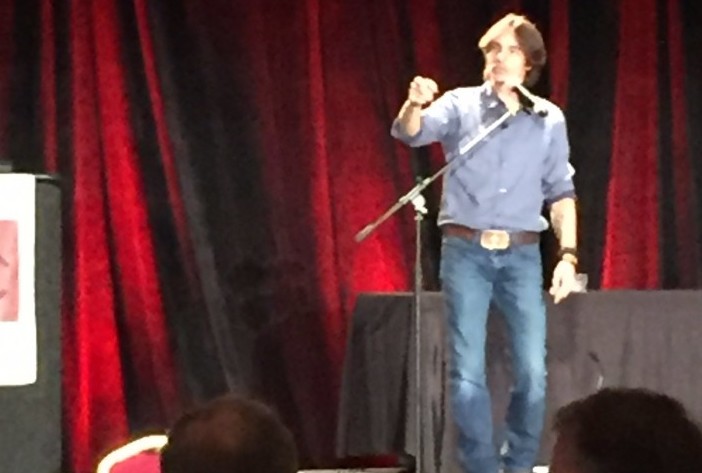
by Julie | Nov 17, 2016 | Management, Onboarding
Are you asking the right questions to determine fit and competency?
Have you ever walked out of a job interview and wondered what the point of some of the questions were? During one interview, I was asked what book I was reading. I thought to myself which answer would be better: “A Brief History of Time” by Stephen Hawking or “50 Shades of Gray” by E.L. James? Will my answer impact whether I get the job or not?
When I think about silly interview questions, I am reminded of The Internship starring Vince Vaughn and Owen Wilson. So, I thought I’d include that clip. As you watch this, think about the questions that you are asking your candidates. Are the questions centered around determining whether the candidate has the skills necessary to perform the job? Will you learn if they will fit into the company culture? Can you ascertain if the position is one that the candidate will find fulfilling?
The Internship: The Big Interview
|
|
Hiring new employees can be challenging. You want to find someone who will work well with the existing team, bring new ideas and also thrive in company culture.
So, spend time thinking about the right questions that capture how the candidate approaches difficult situations, how he has solved problems similar to what he will face in your company and what values she finds important in the work place.
If you spend that time ahead of the interview, the odds of choosing the right candidate are greater than the odds of your miniature self escaping from a blender.

by Julie | Nov 10, 2016 | Management
With the election season over (finally), I was thinking about how we pick our elected officials. Do we pick them because they are like us? Do we pick them because we respect them? Do we pick them because they are qualified to do the job? Or do we pick them because we don’t like any of the other options?
From that, I started to think about how we choose our employees. Do we pick employees that have similar interests? Do we pick employees based on their personality? Or do we pick employees because they are qualified to do the job?
Studies show that we are drawn to people who are like us and this is especially true during the hiring process. But, the reality is, you don’t want a company full of people who think the same way. This may minimize conflict but it also limits exposure to other ideas or viewpoints. You want a workforce that brings different thoughts and ideas along with the desired skill set to be a valuable team member. Terry Tigner, Managing Partner at Next Level commented that the purpose of diversity is to bring a new perspective into the workplace and if you aren’t taking advantage of that perspective, then you are missing a key advantage.
So, as you look for new employees to bring into your organization, ask yourself what skill set/personality/perspective could augment what you already have in place? Have you created a culture that is willing to accept different perspectives and viewpoints? Are you comfortable with people who have different personalities that may challenge your current workforce but could help move your organization forward?
Being aware of these issues as you move through the hiring process will aid your organization in building the optimal team to allow your business thrive.

by Julie | Nov 8, 2016 | Interim Management, Management
HINT: IT IS A 2-WAY STREET
Social media is very much a part of our society. We use this platform to connect with our friends, share our viewpoints and expand our professional connections. But, how is social media impacting the work place? I have heard of an increasing number of employers reviewing social media profiles of perspective employees during the hiring process. But, what exactly does that tell an employer?
Research shows that LinkedIn is the most used social media site when it comes to professional networking while most people have a profile on Facebook or Twitter for their personal life. Both employers and employees see a distinction between professional and personal media sites.
One of the questions that arise is whether a perspective employee’s profile on a personal social media site can be used when making a hiring decision. Perspective candidates feel their personal social media site should not be review during the hiring process while some employers feel this can provide valuable insight into the candidate.
Here are some tips to consider when evaluating your use of social media during your hiring process:
- How does your company’s social media presence appear to prospective candidates? Is the message clear and in line with the company culture? Or is there a disconnect between who you are and who you portray on social media? Attracting strong candidates is augmented by a well-rounded social media presence.
- Using social media sites can help attract both active and passive candidates. A well-crafted job description on your social media pages may spur interest from highly qualified candidates, even if they are not currently searching for a job.
- Be mindful of the decision to use personal social media sites to make hiring decisions. This could potentially expose your company to discrimination charges. If you decide not to hire a candidate based on information gathered from these sites, make sure to document why the decision was made.
- Social media is not a substitute for a robust hiring process. In the end, you need to have a methodology that will help you hire the best employees that will mesh with the company culture.

by Julie | Nov 1, 2016 | Interim Management, Management
Last week, the Investment Casting Institute hosted the 63rd Annual Technical Conference and Expo. The key note speaker was Keni Thomas, a former Army Ranger who was awarded the Bronze Star for Valor and the Combat Infantryman’s Badge from the United States Army. Keni was one of our brave soliders who fought in the “Black Hawk Down” battle in Mogadishu, Somalia.
If you have seen the movie “Black Hawk Down” then you know the story, but, his talk didn’t focus on what happened during that battle as much as the importance of leadership. He quoted the Army manual on Military Leadership’s definition of leadership: “Leadership is the process of influencing others to accomplish the mission by providing purpose, direction and motivation.”
As he points out, there is nothing in the definition that mentions rank, position or pay-grade. Leadership is about the example you set regardless of where you fall in the pecking order.
Often times when we are faced with a problem at work, we wait for some one else to fix it. Keni’s point was that we shouldn’t wonder who is going to fix it but rather, we should just accept responsibility and get it done.
Imagine how much more we could get done if everyone adopted this philosophy. What if we spent time explaining to each team member the importance of their individual role and how it impacts the greater good? What if our organizations developed leaders rather than supervisors and managers, how much further along would the organization be?
At the end of his speech, Keni received a standing ovation. There is no doubt that part of this was a heart felt appreciation for what the military does to keep us safe and the sacrifices they make along the way. But, I also believe that his humble perspective of the value that every team member contributes to the greater good was a powerful wake-up call to the entire audience.
Thank you Keni Thomas. Thank you US Military. Thank you to those people in our lives that demonstrate leadership on a daily basis.

by Julie | Oct 13, 2016 | Management, Process Improvement
GIVING YOUR EMPLOYEES THE TOOLS THEY NEED TO DRIVE IMPROVEMENT
After writing my article titled, “Don’t Rely on Super Heroes to Achieve Your Business Objectives”, I received numerous comments about not wanting to have too strict of a process that it stifles operator input. I completely agree as we need employees who are engaged in their work to drive improvements. And in order to do that, they need to have the freedom to come up with new, innovative ways to improve the processes they work in every day.
As a manager, I would tell my employees, if you make a wrong decision but your thought process is right, then we will do some coaching about how you arrived at your decision. But, if you make a wrong decision and your thought process is wrong, we will have a completely different discussion.
My team knew my priorities were: safety, quality and communication. So, as they made changes, they needed to think through how the changes would impact these priorities.
The area where they struggled the most was communication. Having honest, direct communication is difficult and in order to that well, employees need to see this demonstrated on a consistent basis and be given the necessary training on how to communicate effectively, especially in emotional situations.
As they made process improvements, we would talk through their decision making process and as necessary, make suggestions on how things could be improved upon in the future. Of course, there were times when decision making wasn’t done with safety, quality or communication in mind. During those difficult circumstances, I would discuss how the outcome could have been improved by keeping them in mind.
Over time, my team was better equipped to make improvements to the process while keeping the business priorities at the forefront of their minds. This provided an opportunity to make process improvements without relying on their favorite super hero.






